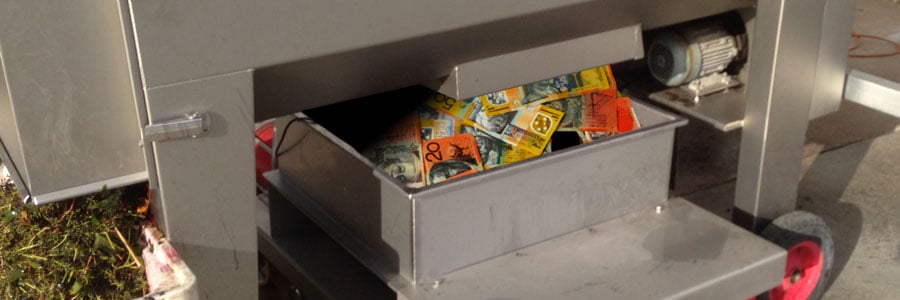In the winemaking industry, selecting the right pumps is essential for smooth operations. Wineries traditionally invest significantly in acquiring new pumps tailored to their specific needs. However, the substantial cost of new pumps has led many wineries to reconsider their approach, turning towards spare parts as a practical alternative.

Four compelling reasons support the decision to choose spare parts over entirely new pumps:
- Operational Familiarity: The maintenance personnel at their facility are often well-acquainted with the existing pumps. A good operator knows the idiosyncrasies with their equipment, they can hear and feel when a pump is working well or showing signs of wear. Replacing the pump can cause issues for operators, so holding spares on hand is a great solution to help keep that bond between operator and their equipment.
- Budget Considerations: Purchasing new pumps is often seen as a capital expense, whereas purchasing spares are classed as an operational expense and is captured within a different budget for most facilities. If you can keep your capital budget for facility upgrades by utilising spares and performing repairs onsite, you will help to improve the efficient operation of your plant and reduce your facilities bottom line.
- Extended Equipment Lifespan: When we increase the service life of a pump, we are in effect reducing the total cost of life of that pump. By performing a repair rather than total replacement, we can hold that piece of equipment for many more years with dramatically lower cost compared to replacing the pump when it fails.
- Cost-Effective Solutions: When you invest in a good quality pump, you are doing much more than buying a brand, you are buying long term reliability in terms of being able to access spares for years to come. Purchasing cheap equipment initially may cost less in the short term, but when it comes to needing spares, you are often at a loss and end up having to again purchase a new pump which may not always be the most cost-effective solution. This can lead to days or weeks of downtime resulting in lost production and reduced profits.
Common pump issues that may prompt the decision to purchase spare parts include:
- Seal and Gasket Wear: Over time, seals and gaskets can wear out, leading to leaks. Replacing these components with spare parts can often resolve the issue and restore the pump's integrity.
- Impeller Damage: The impeller is a critical component in centrifugal pumps. Damage to the impeller, such as corrosion or erosion, can significantly impact performance. In many cases, replacing the impeller with a spare part is more cost-effective than buying a new pump.
- Clogged or Worn-out Valves: Valves in diaphragm or reciprocating pumps can become clogged or worn, affecting the flow of liquids. Replacing valves with service kits is a common practice to restore proper pump function.
- Tubing or Hose Wear: In peristaltic pumps, the tubing or hoses that come in direct contact with the fluid can experience wear and degradation. Regularly replacing these components with OEM Spares helps maintain consistent performance.
- Bearing Failure: When replacing seals or other components its often a good idea to replace the bearings, even if they haven’t failed. This can be done as a preventative measure to ensure the new spares that are being installed last as long as possible.
- Corrosion: Corrosion in pump components, especially those exposed to corrosive liquids, can lead to inefficiencies and malfunctions. Investing in a corrasion resistant coating such as Metaline can help to extend the service life of your pumps.
To learn more, check out our 5 things to check when your pump doesn't work or top pump problems checklist.
Common spare parts purchased for each pump type:
Peristaltic Pump:
- Hoses: OEM Verder hoses have been designed and manufactured to maximise fatigue resistance in order to combat the frequent failure of hoses in peristaltic pumps that occur due to fatigue of the reinforcement layer. The result is a range of hoses that provide an extremely long service life.
- Rollers/Shoes: Peristaltic pumps use rollers or shoes to compress the tubing. These may need replacement if they become worn or damaged.
Centrifugal Pump:
- Impeller: The impeller is a critical rotating component that moves the liquid. It can wear down or become damaged, necessitating replacement.
- Seals: Seals prevent leaks and maintain efficiency. They may need replacement as part of regular maintenance.
- Bearings: Bearings support the rotating parts and may require replacement if they wear out.
- Shaft: The pump shaft connects the motor to the impeller. If it becomes bent or damaged, it may need replacement.
Magnetic Drive Pump:
- Impeller: Similar to centrifugal pumps, magnetic drive pumps have impellers that can wear out and may need replacement.
- Magnetic Coupling: This is a key component that transfers torque from the motor to the impeller without a direct mechanical connection. It may need replacement in case of damage.
- O-rings and Gaskets: These help maintain a seal and prevent leaks. Regular inspection and replacement are essential.
- Wet end Kit: AODD Diaphragm pumps generally have spares that come in kit form. The Wet End Kit will contain all of the wearable spares that come in contact with the fluid. This will contain diaphragms, balls, valves and seats.
- Air Kit: Similar to the wet End Kit, the Air Kit will contain the spares that help maintain the air side of the pump, mostly orings and gaskets.
With over 40 years of expertise, our pump specialists recognise the critical role each component plays in the overall performance. If you require spare parts, please reach out to our dedicated team here.

